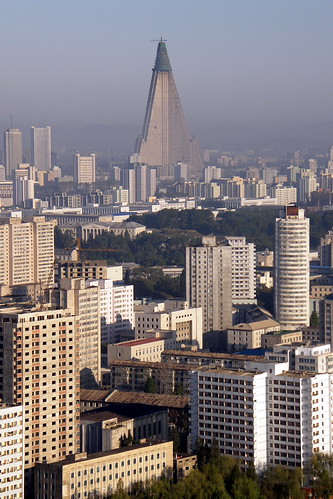
Think North Korea under the various information media fire scenario. And it probably makes no reference to tourism. However, despite the oppression of the North Korean regime, this shows rich cultural and historical treasures.
To understand the reality and complexity of this approach is vital to nation’s history, and especially the relationship with its homonym in the south. Thus, the instruction for the journey is as important as the development of the route. And this line must know that the main attractions and monuments are directly related to the history and tradition of this country.
The Korean peninsula was ruled for hundreds of years in China, except for some periods of Mongol invasion. But in 1910 Japan annexed the area. Then at the end of World War II Korea was divided in two by referring to the 38th parallel. The north was under domination of the USSR and the southern United States until 1948, when the two governments instituted independent.
Separation from both nations claim sovereignty over the whole territory. The bid gave rise to the Korean War, which began in June 1950 when the North Korean army invaded the South. The country’s major cities had to be rebuilt after the war. Three years later the conflict will end with the signing of an armistice, by establishing a neutral zone between the two sides. Nevertheless, the tension and claim lasted until today.

Since the announcement as the Democratic People’s Republic of Korea in 1948 to 8 July 1994, the country was headed by Kim Il Sung, whose power was interrupted by his own death. The footprint of this agent is evident throughout the entire nation. In the capital Pyongyang, there are various monuments in his honor, the most prominent Encarna a statue 30 meters tall. At the Museum of Fine Arts there are paintings of his family ancestors and portraits of the leader.
A few years before his death, Kim Il Sung introduced the Juche ideology, which replaced the Marxism-Leninism. This doctrine was developed by his son, who was at the helm of the country after the death of his father. In short, the essence of the Juche refers to the social history that shaped and sustained by the masses of coverage, without external influence. To better understand this ideology and to gather background on the socialist period is very interesting to visit the Korean Revolution Museum, the Tombs of the Revolutionary Heroes, and the triumphal arch, in Pyongyang.

Matters to take into account the constraints imposed by the regime to travelers who wish to visit these giants, take photographs or buy souvenirs at the souvenir shops. All these actions, simple anywhere, here are complicated. It also prohibits using mobile phones, binoculars and, in many camcorders.
The only way to enter North Korea is via Seoul. They must apply for a visa to travel to Pyongyang a few days. Once on the North Korean capital, mobility to other cities is very complex. Perhaps because of its proximity, Pyongsong is the most accessible. Meanwhile, the high mountain area of Kumgangsan, declared as a tourist area 7 years ago can be paid by South Korea.

Who will come to these three cities can be satisfied. There are many pearls in North Korea, as Maung, Chongjin, Sinudji, Kaesong. Visit but it is very difficult and risks being expelled from the country by the government.
One Response to “North Korea”
Leave a Reply
You must be logged in to post a comment.
mayo 27th, 2009 at 6:28 am
So does this mean that North Korea will declare war with South Korea and all of it’s supporters? How does the UN decide to go to war?